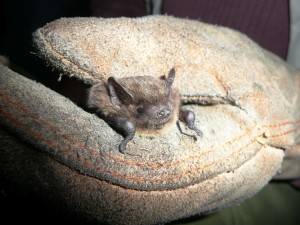NEW BAT CONSERVATION PROJECT AT PENSTHORPE, NORFOLK
NEW BAT PROJECT AT PENSTHORPE, NORFOLK
A pioneering new research project aimed at identifying how bat populations are using farmland habitats is underway at Pensthorpe Wildlife & Gardens near Fakenham in Norfolk.
The project, which is a joint initiative between Conservation Grade (CG), the Pensthorpe Conservation Trust (PCT), the University of East Anglia (UEA) and the Norfolk Barbastelle Study Group (NBSG), is designed to identify how bats make use of the CG agri-environment measures established at Pensthorpe; which are designed to reverse the impact of intensive agricultural land management practices on wildlife.
Bats within the UK are legally protected, as a result of populations declining significantly over the past century. Along with their population decline goes the possibility of their use as natural pest controllers and it is feared that we may altogether lose a valuable agricultural ecosystem service.

Bats have been shown to consume large numbers of insect pests so encouraging bats to forage in agricultural environments may substantially help farmers control pests and may even act to reduce the need for pesticides. Finding out how bats use agricultural land has become a priority.
There is limited knowledge of the use made by bats of small microhabitats, such as wildflower margins, hedges, trees and vegetation. It is hoped that the findings will inform the design and implementation of CG’s sustainable farming protocol and encourage farmers to make provision for insectivorous bats in their land management.
The bats will be tagged with radio transmitters (under licence from Natural England) and tracked using radio tracking devices on Pensthorpe’s CG-accredited farmland concentrating initially on soprano pipistrelle bats, as there is far less information available about them compared to other bat species.
The research team will also use modern, automated, passive bat detectors evenly spaced over the CG farmland plots on Pensthorpe to see which of the UK’s 17 species of bat are found there.
Tim Nevard, Director of CG and a Trustee of the PCT said: “Bats have often been forgotten when agri-environment habitats have been designed and established in the past, and this research with UEA, Norfolk Barbastelle Study Group and Pensthorpe will help correct this”.
Ed Bramham-Jones, Head Warden at Pensthorpe comments: “This study is vital to the development of CG farming practices and hopefully a much needed, widespread boost to bat populations throughout the UK. It’s something Pensthorpe has long been passionate about and our rich variety of habitats make this a very interesting place to research bats.”
Dr Iain Barr, Senior Lecturer from the UEA comments: “This project aims to see how an often overlooked component of the UK’s biodiversity is using our agricultural land. We expect that the bats will show us a lot about their lives and enable us to really learn about how they use the habitat that is important to the whole of the UK. Bats will respond to local insect populations and CG management plan increases biodiversity that can only act to help our endangered bats.”
Dr Katherine Boughey from the NBSG comments: “Bat populations in the UK have declined considerably over the last century. There is great potential for farming to help conserve bats, but to do this we need to know more about how bats use agricultural landscapes. The findings of this project will help support the development of bat-friendly farming practices.”
The results are expected to be ready by August 2014.
Fact Box:
The Norfolk Barbastelle Study Group (NBSG) is a volunteer group dedicated to learning about the distribution and ecology of the barbastelle bat and other bat species in Norfolk. It runs citizen science projects and collaborates with research organisations to further the study and conservation of bats in Norfolk.
For more information see www.norfolkbarbastellestudygroup.org
The soprano pipistrelle is one of the smallest bats in the UK, weighing 3-8g, and with a body length of 3.5-4.5cm. They often roost in buildings and forage in a wide range of habitats comprising woodland, hedgerows, grassland, farmland, suburban and also urban areas. They are insectivorous and feed predominantly on small flies, midges and mosquitos. A single pipistrelle can consume up to 3,000 insects in one night. They are found throughout the UK.
For more information on bat conservation in the UK please contact the Bat Conservation Trust
